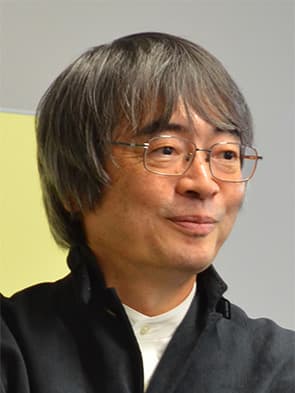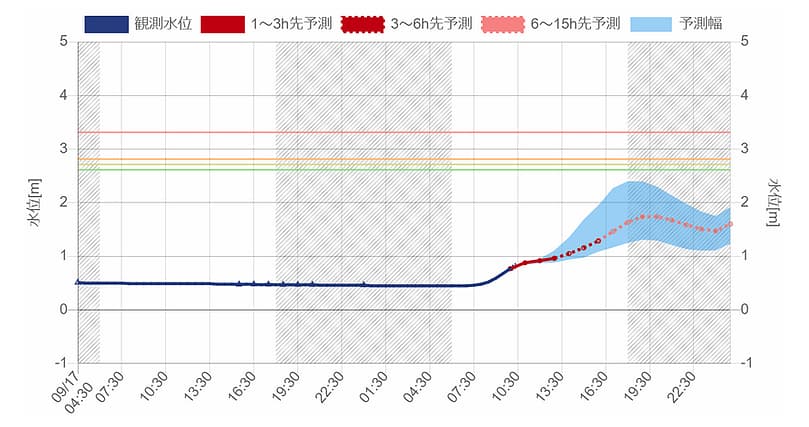
Industry-Academia Cooperation
Future Prediction as Solution to Social Issues
Kozo Keikaku Engineering Inc. established the Social Cooperation Program “Mathematical Engineering for Complex Social Systems in Future” with the Institute of Industrial Science, the University of Tokyo, in February 2016, and has since been collaborating with Professor Kazuyuki Aihara. In this article, we interviewed Professor Aihara of the University of Tokyo, and at the same time we asked Shunya Okuno from KKE, who participated in the joint research, to talk about the endeavor to socially implement the research results.

- Kazuyuki Aihara
-
1977 B.E. in Electrical Engineering, the University of Tokyo
1982 Ph.D in Electronic Engineering, the University of Tokyo
After working as an assistant professor at both the Tokyo Denki University and the University of Tokyo, Dr. Aihara became professor at the University of Tokyo in 1998.
He led the ERATO (Exploratory Research for Advanced Technology) Aihara Complexity Modelling project for JST (Japan Science and Technology Agency) and the FIRST Innovative Mathematical Modelling project by JSPS (Japan Society for the Promotion of Science) through the FIRST (Funding Program for World-Leading Innovative R&D Science and Technology) program. He is now a distinguished professor/professor emeritus of the University of Tokyo.
What Is Mathematical Engineering?
Mathematical engineering is a study that uses mathematics to solve problems in society. It is also an important theme in science, and a research that creates various opportunities in business. Mathematical engineering uses mathematics as a language to project real world issues to the world of mathematics. Then we could analyze real problems in mathematical research, and think about optimization, control, and prediction.


Role of Mathematical Modeling
In my research, I create a mathematical platform, then apply it to explore complex systems. Complex systems have several characteristics, and one is to have dynamics. Complex dynamics are closely related to control. Secondly, in a complex system, many elements form a network interacting with each other. Complex network structures are related to optimization. Thirdly, various big data can be observed from complex systems. Complex big data is related to prediction. Theoretical platform related to complex dynamics, network structure, and observation big data could be applied to a wide range of fields.


Linearity and Nonlinearity in the World
In researching various problems in the world, the concept of nonlinearity is important. As for linearity, there basically already is a theoretical methodology. However, when we actually try to investigate the phenomena in the world, we need to deal with nonlinearity. How to mathematically express the infinite nonlinearity in the world is where mathematical engineering competency and expertise is effectively displayed.
When making predictions by mathematical engineering, if you wish to predict the very near future, linear approximation holds, and therefore linear predictions could be used. However, for an extended period of time, chaotic phenomena are typical and it is difficult to predict. If you could detect nonlinearity in the time domain where linear prediction could not be used, you can make predictions that are overwhelmingly accurate compared to those who cannot.
Predictions are about thinking of “how things change over time”. For example, some change linearly over time and some change exponentially. Ray Kurzweil’s notion of singularity that “artificial intelligence will exceed human capabilities in the not too distance future”, or Moore’s law, are all based on the idea that “technology evolves exponentially”.
A New Method of Data-driven Future Prediction
Now it is possible for big data to be used to create mathematical models of objects in computers driven by data and make predictions. The flood forecasting system, which was created from the joint research between KKE and me, also enables highly accurate flood forecasting without creating a conventional physical model.
This flood forecasting system is based on a theory that by utilizing a large amount of information that are now able to be measured simultaneously with measuring apparatuses and sensors, information of many variables is transferred to improve the prediction accuracy of a specific target variable. Floods can be predicted by simultaneously measuring data such as water levels at various points in a river and precipitation in various points that affects the river, and using the data “well”. The “using well” part is where algorithm takes part in. By putting the observed data into our algorithm, we can almost automatically predict the specific target variable, such as the water level at a specific point of the river. This has a very wide application range that could be used not only for flood forecasting but also for various other predictions. Furthermore, this technique can handle unprecedented high values, namely extrapolation.
-Established Social Cooperation Program “Mathematical Engineering for Complex Social Systems in Future” with Professor Aihara-

- Shunya Okuno
-
Next Generation Business Development Dept.
Weather Disaster Prevention Section
Section Manager
Born in Aichi Prefecture in 1987. After graduating from the Department of Nuclear Engineering and Management, School of Engineering, the University of Tokyo, he joined KKE in April 2012. Appointed to Disaster Reduction & Environmental Engineering Department, he engaged in works involving fluidic system such as tsunami and wind, and other consulting services concerning disaster prevention. He has been in his current post since August 2019.
Participation in Social Cooperation Program
The reason I joined the Social Cooperation Program in 2016, was because of the awareness of the issues concerning the analysis services that I was in charge of. Back then, numerical simulation was constantly advancing in order to solve more complex and large-scale problems. However, as modeling became more and more detailed, the input data on which it was based often contained large observation errors and uncertainties. Under these circumstances, I asked myself “Could I create a new paradigm that could easily and accurately predict from data?” and started my research at Aihara laboratory.

Studying at Aihara Laboratory
Aihara laboratory, where I spent about three years, conducted research at an extremely high level, and everyone was very eager to contribute as much as possible to top journals. Equipped with the common language that is mathematical formulas and English, mathematical experts were challenging creative researches beyond the boundaries of their fields. One time, I was pointed out an error in a complicated mathematical formula on a presentation slide. That was when I realized how researchers see the world differently depending on their proficiency in the common language, and I was astonished.
One advice I received at the laboratory was to “have an axis that is ‘orthogonal’ to the trend”. While valuing the trends at the time such as deep learning, I dared to pay attention to the dynamical system, which was my “orthogonal axis”. By applying dynamical system theory, the time series data can be analyzed and predicted through a different approach from machine learning. At Aihara laboratory, I researched predictions applying dynamical system, asking questions such as “How should we select and integrate predictions on the spot?”, “How do we predict with a small amount of data?”, or “How do we deal with extrapolation that machine leaning is not good at?”. Based on the results, we managed to develop a flood forecasting system “RiverCast” in 2019 at our Meteorological Disaster Prevention Business Office.
Social Implementation of Research Results
“RiverCast” is a cloud-based flood forecasting system that makes real-time predictions of water level in river up to 15 hours ahead. In the past, flood forecasting required a lot of time and effort, but by applying the research results from Social Cooperation Program and providing them as a cloud system, we are now able to offer highly accurate flood forecasting easily. Errors in the weather forecast became a huge issue for social implementation, but by modeling errors from past weather forecast data, we made it possible to quantitatively calculate how much uncertainty there is in the predicted water level, and how likely it is to exceed the standard water level.

With the recent intensification of rainfall, flood control has become an important social issue. The system can be offered to government agencies for prompt flood control activities and evacuation preparation of residents. It can also be offered to private companies to prevent flooding of important equipment and ensure the safety of workers. Recently, an application example during the heavy rain in July 2020 received full recognition, and was incorporated into the regional disaster prevention plan of Tsuruoka City, Yamagata Prefecture. RiverCast’s application example was also introduced by Tohoku Regional Development Bureau. In the construction industry, it is used for safety management of construction sites, and is used by many clients including Kajima Corporation, in a wide range of area (for constructions ordered by Kyushu/Hokuriku/Kanto/Kinki/Tohoku Regional Development Bureau).
We wish to continue to connect with our stakeholders and promote “RiverCast” with your support.








